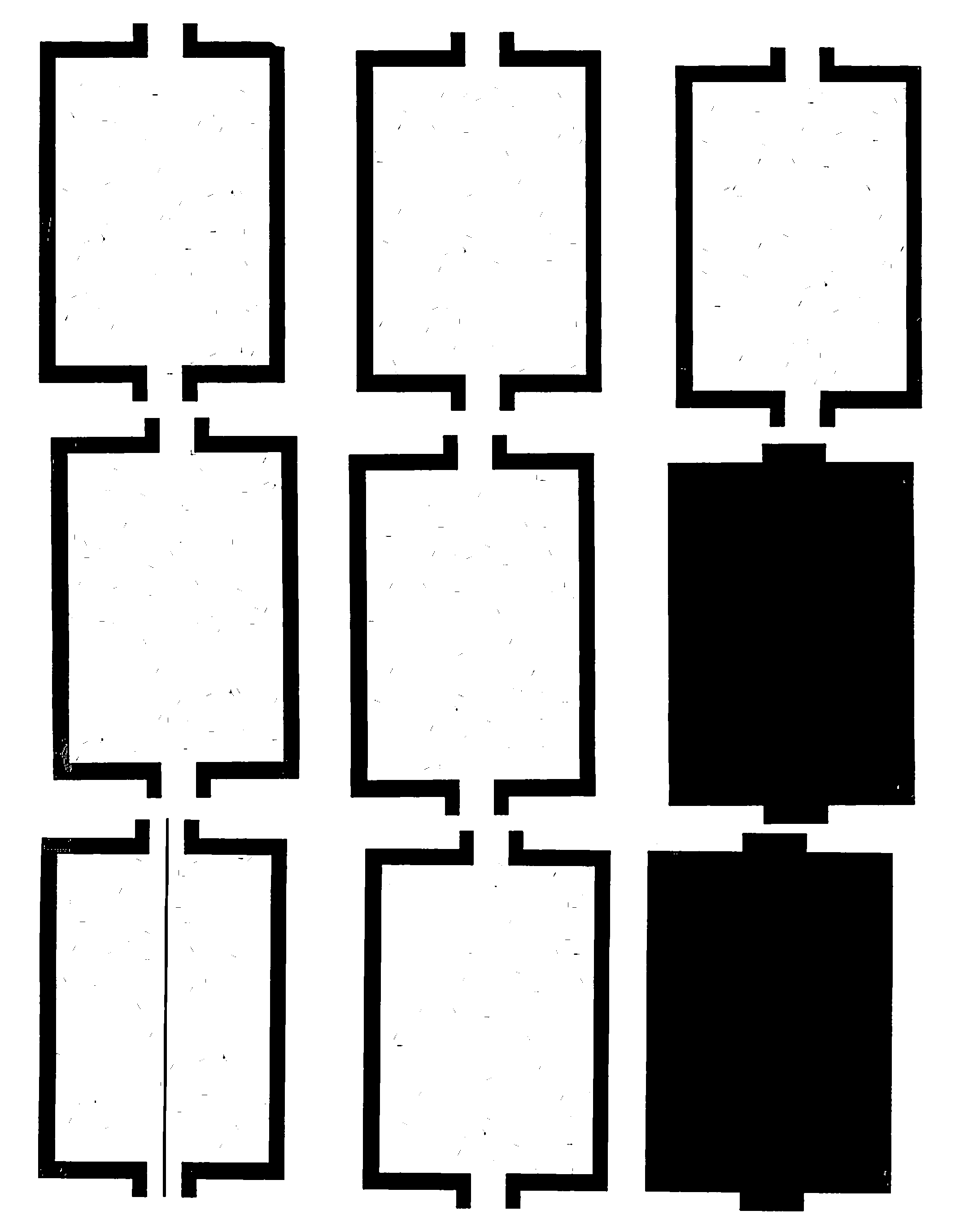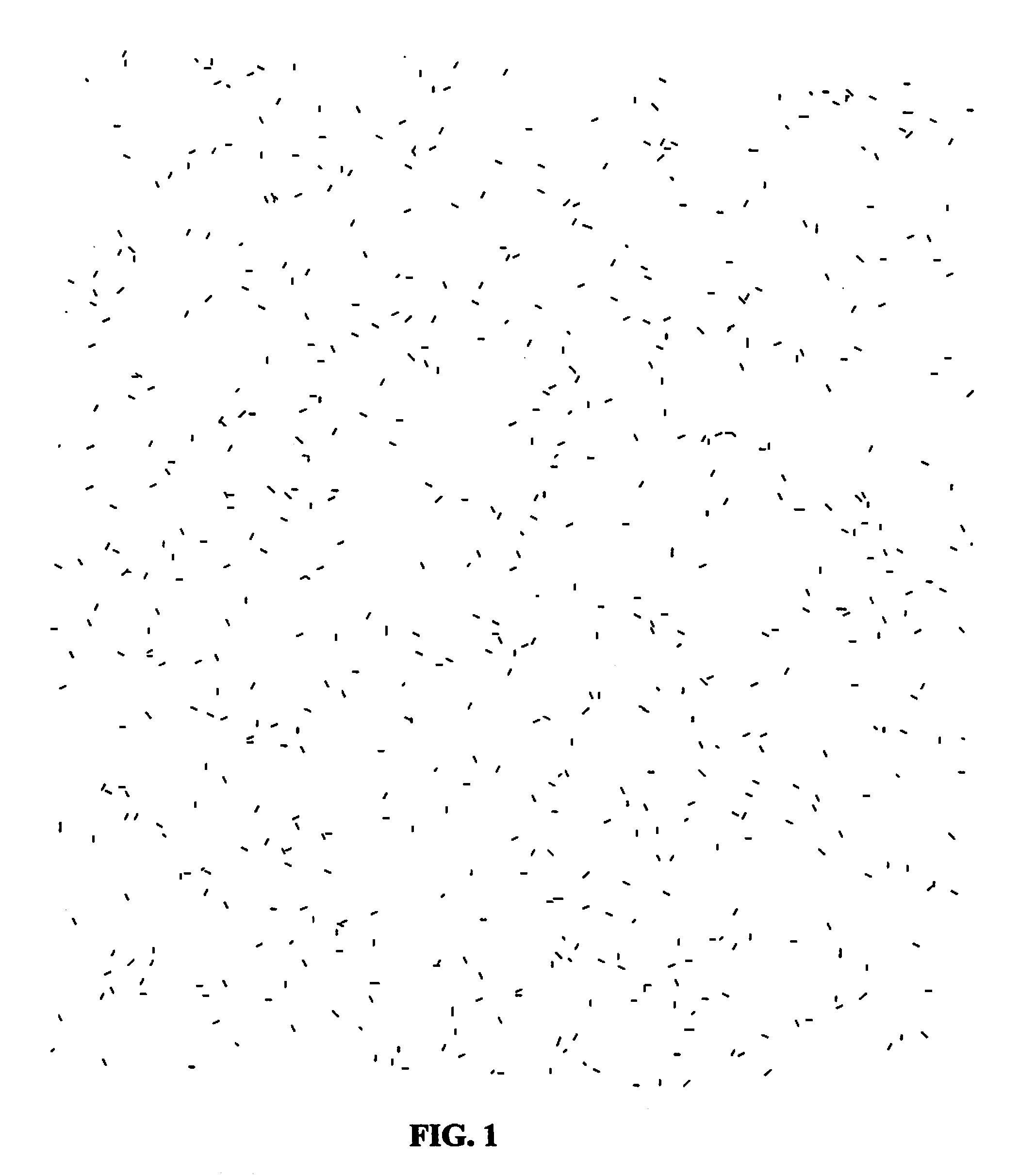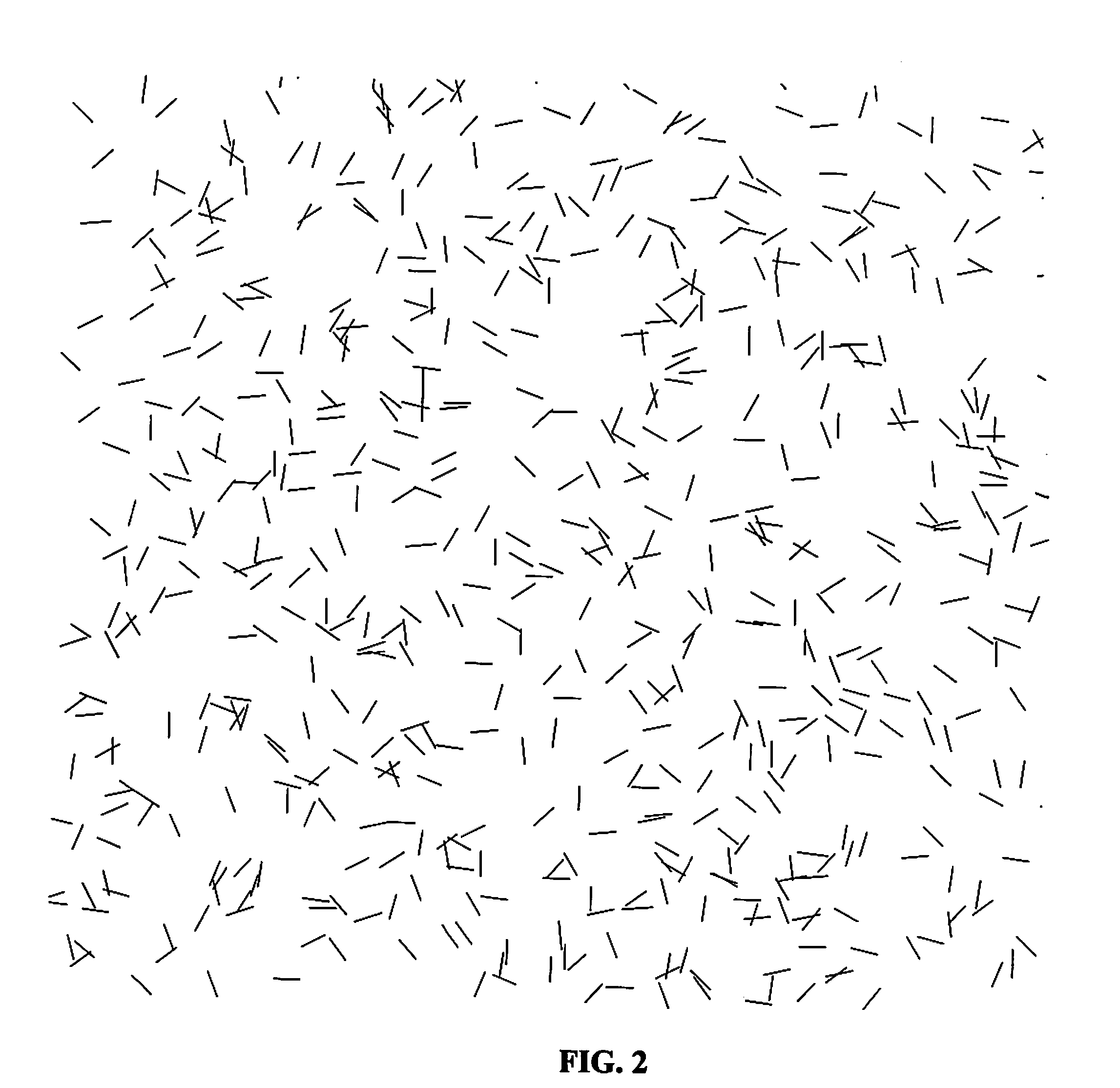Artifical dielectric composites by a direct-write method
a dielectric composite and direct-write technology, applied in the field of dielectric composites, can solve the problems of composites beset by their own technical difficulties, difficult to achieve, and heavy materials, and achieve the effects of less expensive production, reduced cost, and lighter weigh
- Summary
- Abstract
- Description
- Claims
- Application Information
AI Technical Summary
Benefits of technology
Problems solved by technology
Method used
Image
Examples
Embodiment Construction
[0016]According to the present invention, a material suitable for use in composites applicable to various electromagnetic needs is prepared using a direct-write method. An electrically non-conducting pattern, typically comprising palladium, is printed onto an electrically non-conducting substrate, typically based on a textile such as paper, using a direct-write device. The pattern is then covered with an electrically conducting coating, typically by immersing the substrate in an electroless plating solution. Metals available for electroless deposition include nickel, gold, silver, palladium, cobalt, iron, and copper. The patterned conductive lines modify the electromagnetic parameters of the material. By controlling the complex dielectric constant of a material, it is possible to construct RF-absorbing composites.
[0017]The present invention uses a direct-write device, such as a commercial inkjet printer. Other types of writing devices may be used, including other inkjet technologies...
PUM
| Property | Measurement | Unit |
|---|---|---|
| sizes | aaaaa | aaaaa |
| temperature | aaaaa | aaaaa |
| dielectric | aaaaa | aaaaa |
Abstract
Description
Claims
Application Information
 Login to View More
Login to View More - R&D
- Intellectual Property
- Life Sciences
- Materials
- Tech Scout
- Unparalleled Data Quality
- Higher Quality Content
- 60% Fewer Hallucinations
Browse by: Latest US Patents, China's latest patents, Technical Efficacy Thesaurus, Application Domain, Technology Topic, Popular Technical Reports.
© 2025 PatSnap. All rights reserved.Legal|Privacy policy|Modern Slavery Act Transparency Statement|Sitemap|About US| Contact US: help@patsnap.com



